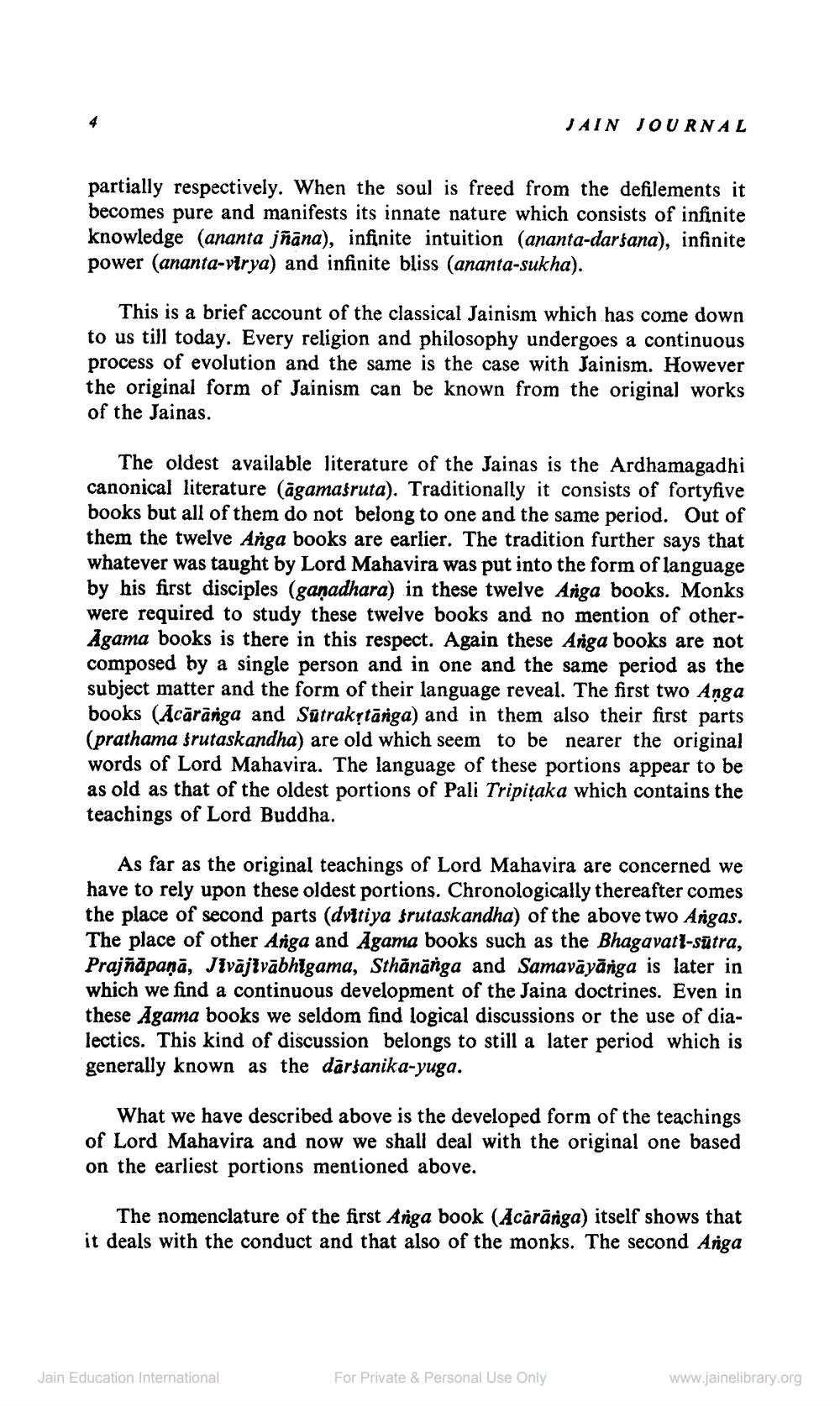Book Title: Jain Journal 1982 07 Author(s): Jain Bhawan Publication Publisher: Jain Bhawan Publication View full book textPage 9
________________ partially respectively. When the soul is freed from the defilements it becomes pure and manifests its innate nature which consists of infinite knowledge (ananta jñāna), infinite intuition (ananta-darśana), infinite power (ananta-virya) and infinite bliss (ananta-sukha). JAIN JOURNAL This is a brief account of the classical Jainism which has come down to us till today. Every religion and philosophy undergoes a continuous process of evolution and the same is the case with Jainism. However the original form of Jainism can be known from the original works of the Jainas. The oldest available literature of the Jainas is the Ardhamagadhi canonical literature (agamasruta). Traditionally it consists of fortyfive books but all of them do not belong to one and the same period. Out of them the twelve Anga books are earlier. The tradition further says that whatever was taught by Lord Mahavira was put into the form of language by his first disciples (gaṇadhara) in these twelve Anga books. Monks were required to study these twelve books and no mention of otherAgama books is there in this respect. Again these Anga books are not composed by a single person and in one and the same period as the subject matter and the form of their language reveal. The first two Anga books (Acaranga and Sutrakṛtānga) and in them also their first parts (prathama śrutaskandha) are old which seem to be nearer the original words of Lord Mahavira. The language of these portions appear to be as old as that of the oldest portions of Pali Tripitaka which contains the teachings of Lord Buddha. As far as the original teachings of Lord Mahavira are concerned we have to rely upon these oldest portions. Chronologically thereafter comes the place of second parts (dvitiya srutaskandha) of the above two Angas. The place of other Anga and Agama books such as the Bhagavatt-sutra, Prajñāpaṇā, Jīvājīvābhīgama, Sthānānga and Samavāyānga is later in which we find a continuous development of the Jaina doctrines. Even in these Agama books we seldom find logical discussions or the use of dialectics. This kind of discussion belongs to still a later period which is generally known as the darŝanika-yuga. What we have described above is the developed form of the teachings of Lord Mahavira and now we shall deal with the original one based on the earliest portions mentioned above. The nomenclature of the first Anga book (Acarānga) itself shows that it deals with the conduct and that also of the monks. The second Anga Jain Education International For Private & Personal Use Only www.jainelibrary.orgPage Navigation
1 ... 7 8 9 10 11 12 13 14 15 16 17 18 19 20 21 22 23 24 25 26 27 28 29 30 31 32 33 34 35 36 37 38 39 40 41 42 43
